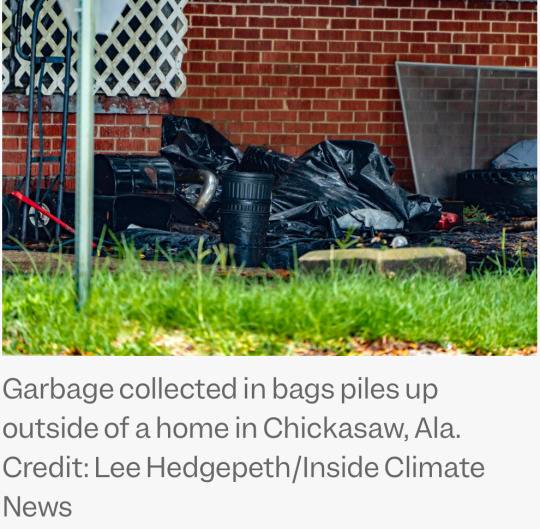#Wheatley Institute
Explore tagged Tumblr posts
Text
Can individuals with different faith or non-faith backgrounds come together and use their points of view to create better public policies on ethical issues? This student says yes! Read her reflection on attending BYU's Wheatley Institute Student Conference on Religion in the Public Sphere.
0 notes
Text
Dandelion News - October 8-14
Like these weekly compilations? Tip me at $kaybarr1735 or check out my Dandelion Doodles on Patreon!
1. All 160 dogs at Florida shelter found homes ahead of Hurricane Milton

“[The shelter] offered crates, food and anything else the dogs would need in exchange for the animals to spend just five days with the foster parents if the human didn't want to keep them for longer. […A]fter about a day of receiving around 100 messages every 30 minutes, Bada said, all 160 were gone from the shelter and in safe and warm homes.”
2. Restoring Ecosystems and Rejuvenating Native Hawaiian Traditions in Maui

“[Volunteers] are restoring water flow to the refuge, removing invasive species, and restoring a loko iʻa kalo using ʻike kūpuna, ancestral knowledge. […] This human-made ecosystem will provide food for community members and habitat for wildlife while protecting coral reefs offshore.”
3. Solar-powered desalination system requires no extra batteries

“In contrast to other solar-driven desalination designs, the MIT system requires no extra batteries for energy storage, nor a supplemental power supply, such as from the grid. […] The system harnessed on average over 94 percent of the electrical energy generated from the system’s solar panels to produce up to 5,000 liters of water per day[….]”
4. Threatened pink sea fan coral breeds in UK aquarium for first time

“The spawning is part of University of Exeter Ph.D. student Kaila Wheatley Kornblum's research into the reproduction, larval dispersal and population connectivity of Eunicella verrucosa. […] Pink sea fans are believed to have been successfully bred by only one other institution, Lisbon Oceanarium, in 2023.”
5. Tiny 'backpacks' are being strapped to baby turtles[….]

““We analysed the data and found that hatchlings show amazingly consistent head-up orientation – despite being in the complete dark, surrounded by sand [… and] they move as if they were swimming rather than digging[…. This new observation method is] answering questions about best conservation practices,” says Dor.”
6. New California Law Protects Wildlife Connectivity

“A new state law in California will instruct counties and municipalities to conserve wildlife corridors when planning new development. […] This could entail everything from creating wildlife crossings at roads or highways, employing wildlife-safe fencing, or not developing on certain land.”
7. ‘I think, boy, I’m a part of all this’: how local heroes reforested Rio’s green heart

“By 2019, [the program] had transformed the city’s landscape, having trained 15,000 local workers like Leleco, who have planted 10m seedlings across […] roughly 10 times the area of New York’s Central Park. Reforested sites include mangroves and vegetation-covered sandbars called restinga, as well as wooded mountainsides around favelas.”
8. Alabama Town Plans to Drop Criminal Charges Over Unpaid Garbage Bills

““Suspending garbage pickup, imposing harsh late penalties and prosecuting people who through no fault of their own are unable to pay their garbage and sewage bills does not make payment suddenly forthcoming,” West said. [… The city] has agreed to drop pending criminal charges against its residents over unpaid garbage bills.”
9. New Hampshire’s low-income community solar program finally moves forward

“The state energy department is reviewing seven proposals for community solar arrays that will allocate a portion of their bill credits to low-income households. […] New Hampshire’s strategy of working with utilities to automatically enroll households that have already been identified streamlines the process.”
10. The Future Looks Bright for Electric School Buses

“EPA has awarded about $3 billion in grants from the infrastructure law, which paid to replace about 8,700 buses. Of those, about 95 percent are electric. [… Electric buses are] cheaper to operate and require less maintenance than diesel buses and will soon be at cost parity when looking at the lifetime cost of ownership[….]”
October 1-7 news here | (all credit for images and written material can be found at the source linked; I don’t claim credit for anything but curating.)
#hopepunk#good news#dogs#hurricane milton#florida#animal shelters#foster dog#hawaii#hawaiʻi#maui#solar#water#solar energy#coral#endangered species#coral reef#turtles#sea turtle#technology#wildlife#habitat#nature#california#rio#south america#reforestation#poverty#anti capitalism#solar panels#electric vehicles
199 notes
·
View notes
Text
Aperture Horizon

Another insane crossover idea. Due to the isolated nature of Aperture Laboratories, the facility continued to run unimpeded during the Faro Plague as GLaDOS continued to put human after human she had in cryostorage into the proverbial (sometimes literal) meat grinder for testing purposes. Just before the Swarm discovered the facility, Chell succeeds in defeating the mad A.I., stopping Aperture's energy signature from being detected by the Swarm.
Over the centuries, as GAIA 1.0 works diligently to restore the biosphere, she attempts to send machines to terraform the region surrounding the ruins of Aperture, only for them to disappear as they get closer. GAIA eventually decides to cut her losses and stop sending machines to that region, creating a buffer zone. Even post-ZD humans avoid the area.
After GAIA's destruction by the Extinction Signal sent by Nemesis, any machine or tribal human who approaches the facility continues to disappear. This catches the attention of the now self-aware HEPHAESTUS as even the newly-designed combat machines that wander into the area are not immune to these disappearances.
After Aloy brings GAIA 2.0 online, the benevolent A.I. learns about HEPHAESTUS's attempts to explore the Aperture ruins, but places this particular concern on the back burner due to the much more pressing need to get the biosphere stabilized.
As Aloy searches for the rogue Zenith Walter Londra in the Burning Shores, GAIA detects a series of seismic shocks within the Aperture ruins buffer zone her predecessor established. These tremors are the result of Wheatley's brief reign of idiocy running the facility and the near-destruction of it. GAIA finally decides to look into this and requests both Sylens & Beta to look into the APOLLO database as to what Old World facility was there.
As Aloy was making her way back to the Base, one of the nearby communities report that for the first time, a person was seen coming from the ruins. A burnette woman wearing a white shirt & orange pants. She was seen carrying a large metal cube...
Beta discovers in Walter's records about a research institute that Heavencent procured moonrocks for in the past. The institute's address happened to line up with coordinates near the center of the buffer zone. Meanwhile, Sylens discovers that this same institute also had dealings with the US military some decades prior to FAS' rise to prominence as a robotics manufacturer. The rumors about the mystery woman from the buffer zone catch the attention of Kotallo, who then relays this information to the others.
Once GAIA, Beta, and Sylens compare notes, they decide to brief Aloy on her new mission; to find this mystery woman & seek her assistance into gaining access to the facility to hopefully find a potential weapon that can be used against the coming threat of Nemesis.
Unfortunately for everyone, someone's been busy growing an army of allegedly killer birds...🤣
#Plastic Robots#Toy Photography#Spin Master#Horizon Zero Dawn#Horizon Forbidden West#HZD#HFW#Aloy#HZD Aloy#HFW Aloy#NECA#NECA Toys#Portal#Portal Chell#Chell#GLaDOS#The Cake Is A Lie#Fan Fic Ideas#Playstation Shapes Collection
13 notes
·
View notes
Note
Hiii do you have any human wheatley headcanons? Like what he actually does for work and stuff like that? Also thoughts on fanart of your portal designs? (I LOVE THEM SO MUCH I WANNA DRAW THEM EEEE!!)
i am currently working on the refs for all my designs and i will include some hcs/ideas :3
i can tell u that wheatley in my human au works at aperture as (mainly) a test subject overseer. he makes sure everything goes well in the relaxation center. i kind of see him as some sort of butler too lol. test subjects in my au aren’t put into stasis, they basically just live at aperture, and are paid to solve tests. and the relaxation center is like a huge dormitory- wheatley is one of the people in charge of it. he also assists other scientists while they watch test subjects solve tests. he kinda goes where he is needed since he doesn’t have a degree in anything, so he does multiple tasks that don’t require knowledge he doesn’t have- and you might ask, how did a guy like him end up at aperture?? to make it short, he is from a rich, important family that owns an institution that funds aperture, and along with his brother (intelligence core, who instead works as a scientist) he was given a position in the laboratories.
thats the general idea at least, but i still have to figure out some details lol. the au is a huge work in progress
ALSO??? I LOVE WHEN PEOPLE DRAW MY DESIGNS it makes me soso happy 😭😭😭😭 if you draw them pleaseeee show me/tag me ❤️🙏🏻
#human wheatley#um but seriously i get soooo happy and excited when people draw my portal designs#please dont be shy if you wanna draw them GO AHEADDDD😭❤️‼️
49 notes
·
View notes
Text








Yet throughout these lean years, Wheatley Peters continued to write and publish her poems and to maintain, though on a much more limited scale, her international correspondence. She also felt that despite the poor economy, her American audience and certainly her evangelical friends would support a second volume of poetry.

Phillis Wheatley Peters died, uncared for and alone. As Richmond concludes, with ample evidence, when she died on December 5, 1784, John Peters was incarcerated, "forced to relieve himself of debt by an imprisonment in the county jail." Their last surviving child died in time to be buried with his mother, and, as Odell recalled, "A grandniece of Phillis' benefactress, passing up Court Street, met the funeral of an adult and a child: a bystander informed her that they were bearing Phillis Wheatley to that silent mansion."
Recent scholarship shows that Wheatley Peters wrote perhaps 145 poems (most of which would have been published if the encouragers she begged for had come forth to support the second volume), but this artistic heritage is now lost, probably abandoned during Peters's quest for subsistence after her death. Of the numerous letters she wrote to national and international political and religious leaders, some two dozen notes and letters are extant. As an exhibition of African intelligence, exploitable by members of the enlightenment movement, by evangelical Christians, and by other abolitionists, she was perhaps recognized even more in England and Europe than America.
Early 20th century critics of Black American literature were not very kind to Wheatley Peters because of her supposed lack of concern about slavery. She, however, did have a statement to make about the institution of slavery, and she made it to the most influential segment of 18th-century society - the institutional church. Two of the greatest influences on Phillis Wheatley Peter's thought and poetry were the Bible and 18th-century evangelical Christianity; but until fairly recently her critics did not consider her use of biblical allusion nor its symbolic application as a statement against slavery. She often spoke in explicit biblical language designed to move church members to decisive action. For instance, these bold lines in her poetic eulogy to General David Wooster castigate patriots who confess Christianity yet oppress her people:

And in an outspoken letter to the Reverend Samson Occom, written after Wheatley Peters was free and published repeatedly in Boston newspapers in 1774, she equates American slaveholding to that of pagan Egypt in ancient times: "Otherwise, perhaps, the Israelites had been less solicitous for their Freedom from Egyptian Slavery:
"I don't say they would have been contented without it, by no Means, for in every human Breast, God has implanted a Principle, which we call Love of freedom; it is impatient of Oppression, and pants for Deliverance; and by the Leave of our modern Egyptians I will assert that the same Principle lives in us."
Phillis died at the age of 31.
10 notes
·
View notes
Text
MOGAI BHM- Belated Day 18!
happy BHM! today i’m going to be talking about seminal Black authors! there are way too many to fit into one post, so i’m choosing a few for this post and including more resources at the end for looking further into the subject!
Phillis Wheatley-

[Image ID: A fuzzied portrait-style painting of Phillis Wheatley, a thin Black women. In the painting, she has a somewhat stoic expression on her face, and her hair is up in a crown of braids. She is wearing a pair of dangling earrings, a pearl necklace, and an off-the-shoulder, puffy-short-sleeved white gown. End ID.]
Phillis Wheatley was perhaps the very first Black person to become a famous writer in America. She was enslaved, but her owners believed she was exceptionally smart, so they taught her to read and write. Phillis began writing poetry at a very young age, and at the age of 13, she published her first poem, called “An Elegiac Poem, on the Death of that Celebrated Divine, and Eminent Servant of Jesus Christ, the Reverend and Learned George Whitefield ...”, or the Whitefield Elegy, which elevated her to national fame.
Phillis was rejected by many publishing houses in the North because she was of African descent, so she went to London publishing houses instead. There, she met with many noted abolitionists and activists of the time, including Benjamin Franklin. By the age of 18, she had published 28 poems. Her poem anthology, “Poems on Various Subjects, Religious, And Moral” was the first collection of poems ever published by an African-American person.
Phillis was deeply religious. She often incorporated biblical themes into her writing, and she wrote many elegies, poems about notable people, and poems about her employers. She also wrote poetry about slavery in America, and combined biblical commentary with poetic depictions of slavery to decry the institution. An example of this is her most well-known poem, “On Being Brought From Africa To America”.
It is now believed that Phillis Wheatley wrote around 145 poems, though not all of them were published. She has been both heavily criticized and heavily praised by Black literature critics, but the significance of her poetry and her efforts are undeniable.
Olaudah Equiano-

[Image ID: A color portrait-style painting of Olaudah Equiano, a thin Black man. The painting has a brown background. In the painting, he is wearing his hair in the style of George Washington’s hair, and he’s wearing a two-layered, red, buttoned overcoat over a fancy white turtle-neck. End ID.]
A contemporary of Phillis Wheatley, Olaudah Equiano was born to Igbo heritage in West Africa. When he was only eleven, he was kidnapped into slavery. After a few years of travelling with his master, learning the mariner’s trade and being sold a few more times, he was allowed to purchase his own freedom, and after he did so, he moved to London, where he joined the abolition and anti-slavery movement active there. There, with a friend named Ottobah Cugoano, he advocated fiercely for the end of the slave trade.
In 1789, Olaudah’s abolitionist efforts culminated in his publishing of his autobiography, called “The Interesting Narrative of the Life of Olaudah Equiano, or Gustavus Vassa, the African”. This book was a narrative and exploration of his experiences during his kidnapping, selling, the Middle Passage, and his few years of being enslaved. This autobiography became very popular, and it ushered in a new genre, dubbed the ‘slave narrative’ genre, wherein Black people wrote narratives of their experiences with slavery. This genre helped sustain and advance abolitionist movements.
His narrative was internationally popular. It went through nine editions in some places, was translated into many languages, and became a huge part of abolitionist scholarly work. When he died in 1797, Olaudah hadn’t gotten the chance to see any British action against slavery, but he nonetheless was pivotal in inspiring such action, even posthumously.
Maya Angelou-

[Image ID: A black-and-white photograph of Maya Angelou, a thin Black woman. In the photograph, she is smiling and her hair is held up in a checkered head scarf. She’s wearing a fancy, intricately patterned dress with flower patterns and checker patterns. End ID.]
Born in 1928, Maya Angelou was many, many things- a singer, an actress, a director (Hollywood’s first Black female one), a teacher, an activist, and a dancer- but she was most famous for her writing. Maya was a humanitarian civil rights activist who worked with both Dr. Martin Luther King Jr. and Malcolm X, and her writing was a beautiful example of her deep drive for justice. In her civil rights work, she was the northern coordinator of Dr. King’s SCLC.
Maya had a traumatic childhood, which she expressed through her most famous work, the one that promoted her to national and even international fame amongst circles of writers, called “I Know Why The Caged Bird Sings”. In this autobiography, she spoke of her childhood, including the trauma behind how her love for language developed. Maya was a contemporary of another massively famous and important Black author, James Baldwin, who convinced her to write “I Know Why The Caged Bird Sings” after she returned from living in Cairo and Ghana with her son.
Maya Angelou wrote other autobiographies as well- 6 all totaled. These biographies depicted real-life experiences with racism, sexual abuse, sexism, and other deep issues, which have made her autobiographies somewhat controversial to some. In her final autobiography, titled “A Song Flung Up To Heaven”, she discussed the span of four years in which so much racial violence, including the assassinations of Martin Luther King Jr. and Malcolm X, had such a deep impact on her and the Black community in America. She spoke about how difficult it was to express that pain, and the impact those events had on her.
Maya Angelou was also an incredibly accomplished poet. Her poetry, including volumes like “Just Give Me A Cool Drink Of Water ‘Fore I Diiie”, was very diverse- she wrote about Black beauty and Black pride, womanhood, Black womanhood, social justice, Black American experiences, sexuality, and anti-war activism, and her poetry is perhaps best known for its unabashed celebration of Black female power.
Maya Angelou also wrote several children's books throughout the 1990s, including “My Painted House, My Friendly Chicken, And Me” and “Mrs. Flowers: A Moment Of Friendship”. She has won many Pulitzer Prizes for her work, and is one of the most prolific and influential Black female writers of all time. She passed away in 2014.
James Baldwin-

[Image ID: A black-and-white photograph of James Baldwin, a thin Black man with short greying, curly black hair. In the photograph, he has his head rested in the palm of his hand and the other arm laying on a table in front of him as he sits, looking to be deep in thought, in front of a crowded bookshelf. He’s wearing two watches and a denim button-up short-sleeved shirt. End ID.]
Born in 1924, James Baldwin grew up in poverty in Harlem. Having always had a passion for Black justice, he grew up feeling like an outsider due to being a Black gay man. Throughout his life, he would write about the intersectionality of Blackness and sexuality, long before terms for the concept of intersectionality were outlined.
Baldwin is most famous for his earlier works, which he published during the 1950s and the 1960s, the heart of the civil rights movement. Baldwin did work closely with notable civil rights activists. His two first novels were two of his most famous- Go Tell It On The Mountain, a semi-autobiographical work about his childhood and Black issues, and Giovanni’s Room, a book that was ahead of its time for depicting the white world but especially for depicting the struggles of a bisexual man. Around the same time, he published his first collection of essays, titled Notes of A Native Son.
He published another book of essays, called Nobody Knows My Name, in 1961, which became a huge part of Black civil rights movement literature and is known for exploring interracial dynamics and relationships during the time period. This theme, coupled with themes of sexuality, also dominated a second book of his, called Another Country.
Baldwin, who lived in Paris for awhile in later commuted back and forth between America and Paris, embraced an outsider’s position. He was able to gain an outside view of America through living in Paris- he felt that he could not truly be a writer in America due to the stress of always having to look over his shoulder and the suppression he faced in the field as a Black gay man. His work reflected an international view of American racial dynamics.
An article about Baldwin on Black Muslim separatist politics, published in a newspaper in the early 1960s, was turned into a best-selling Baldwin work called The Fire Next Time, undoubtedly one of Baldwin’s most famous works. James Baldwin is also known for his plays- one of which, Blues For Mister Charlie, was performed on Broadway.
Throughout his life, James Baldwin forged a unique path for himself, exploring the realms of Black masculinity and Black sexuality and gender- which both ostracized and elevated him. Today, he is rightfully considered one of history’s most influential and seminal Black writers, and he remains the paradigm for Black gay male literature.
Toni Morrison-

[Image ID: A color photograph of Toni Morrison, a heavier Black woman with long, thick, greying dreadlocks tied back in a braid. She’s sitting at a table with her hands folded, and she’s wearing a loose grey cardigan over a black shirt. End ID.]
Undoubtedly one of the most famous, influential, and seminal Black authors of all time, Toni Morrison is perhaps most well-known for her fierce exploration of Black issues in her work, including colorism, slavery, misogynoir, and Black relationships and love. Black culture and storytelling was very formative in her childhood, and influenced the content of her work. An alumnus of Howard University, a famous HBCU, she taught there for several years. In 1993, she won the Nobel Prize for Literature.
In 1970, Morrison released her first book, a novel called The Bluest Eye. A bold novel about beauty standards in the Black community, it told the story of a Black girl who wanted deeply to have blue eyes and was heavily influenced by white beauty standards. This theme of body image issues among Black girls and how colorism affects them, was also echoed in a much later (2015) Morrison work entitled God Help The Child.
Some other seminal works written by Toni Morrison are Beloved, Song of Solomon, and Jazz. Beloved, which won a Pulitzer Prize, tells the tragic true story of an enslaved woman who tried to escape but was recaptured, causing her to kill her infant daughter because she wanted her to escape a lifetime of slavery. Song of Solomon, a tale from the perspective/narration of a Black man trying to find his identity, elevated Morrison to national fame. Jazz, a 1992 novel set in the 1920s, was about passion and violence during the time period.
Toni Morrison has also written several childrens books along with her son, as well as essays and speeches, the latter two of which have been compiled in such volumes as “What Moves at the Margin: Selected Nonfiction” and “The Source of Self-Regard: Selected Essays, Speeches, and Meditations”. In 2005, Morrison won the Coretta Scott King Award for her book Remember, which chronicled the lives of Black children during the fight for school integration during the Civil Rights Movement. In 2019, after passing away at the age of 88, she was awarded the Presidential Medal of Honor.
Amiri Baraka-

[Image ID: A black-and-white photograph of Amiri Baraka, a thin Black man with an afro and a beard. In the photograph, he has a stoic expression on his face, and he’s wearing a black cloak of sorts with a necklace over his garments. He’s standing at a podium crowded with several microphones and gripping the side of the podium. End ID.]
Born in 1934, Amiri Baraka was for decades one of the most prominent Black voices in American literature, especially as it pertained to civil rights and racial justice. After attending Howard University, an HBCU, and spending 3 years in the Air Force, he began publishing very incendiary works, like his essays and poetry, which spoke fiercely about racial pride and racial justice, and were often very difficult for white audiences to engage with.
In the 1950s, he aligned himself with beat poetry and beat poets like Allen Ginsburg and Jack Kerouac, and in the 1960s, he became more radical, aligning himself with Black nationalism and the Black Power movement. He is well-known for his poetry about Black politics, which was critical to the literature of the Black Power Movement. In 1965, he ushered in the Black Arts Movement by founding a studio theater for Black artists in Harlem.
Amiri Baraka aligned himself more with third-world movements during the 1970s. His plays and poetry expressed his desires, and though he remains controversial to this day, he is also undoubtedly one of the most important Black writers from the Civil Rights Movement and Black Power eras.
Summary-
Phillis Wheatley, the first famous Black American writer, wrote large amounts of poetry during the 18th century, and was propelled to national and international fame
Olaudah Equiano, a contemporary of Phillis Wheatley, helped largely to promote British abolitionist politics through his internationally famous autobiography which he published in 1789
Maya Angelou was a multitalented singer, dancer, actress, and most famously a writer whose poetry and memoirs detailed civil rights and Black existence in America
James Baldwin was a Black gay man who was active in the Civil Rights Movement and wrote seminal works about Black sexuality
Toni Morrison, who won the Nobel Prize in 1993, explored Black womanhood, Black culture, Black community dynamics, and Black sexuality through her prolific novels and writings
Amiri Baraka was a controversial, nationalist Black artist who wrote incendiary essays and poetry about Black identity and Black power, and helped found the Black Arts Movement
tagging @metalheadsforblacklivesmatter @bfpnola @intersexfairy
Sources-
https://www.britannica.com/art/African-American-literature/Prose-drama-and-poetry
https://www.poetryfoundation.org/poets/phillis-wheatley
https://npg.si.edu/blog/phillis-wheatley-her-life-poetry-and-legacy
https://slaveryandremembrance.org/people/person/?id=PP003
https://www.britannica.com/biography/Olaudah-Equiano
https://www.poetryfoundation.org/poets/maya-angelou
https://www.mayaangelou.com/
https://www.britannica.com/biography/Toni-Morrison
https://www.poetryfoundation.org/poets/amiri-baraka
https://poets.org/poet/amiri-baraka
https://www.britannica.com/biography/James-Baldwin
https://www.nbcnews.com/feature/nbc-out/james-baldwin-s-sexuality-complicated-influential-n717706
21 notes
·
View notes
Text
When we don't sit long enough with a problem, we never learn about its system and we only deepen into our own reactions about it. Our search for solution is really a search for someone who will shield us from it. Only a charlatan will take up that offer. And because we don't know the problem, we can't scrutinize the charlatan's process, having to blindly trust and hope it works out.
When we don’t answer these questions as a community, when we have no agreements about why we belong together, the institutions we create to serve us become battlegrounds that serve no one. All energy goes into warring agendas, new regulations, stronger protective measures against those we dislike and fear.
Margaret Wheatley, Finding Our Way
6 notes
·
View notes
Text
by Joe Carter | A national poll on couples and pornography was commissioned by the Wheatley Institution at Brigham Young University and the Austin Institute for the Study of Family and Culture. The poll finds that a majority of men and women in a national sample express some level of approval for pornography use…
3 notes
·
View notes
Text
Oddly Murder Drones-themed dream.
Exactly what the title says. I had a dream about the show and it was oddly interesting. Bare with me details are starting to slip as I wake up.
It starts in-between ep 2-3, I think. Uzi, N and V (in their normal clothes) are in this sorta institute like place. Anyway—they explored quite a bit prior to the dream. One large shock they run into is J’s body, or rather what’s left of it after exploding Absolute Solver. The female Murder Drone is down to her head yet fully conscious. Only she kinda cannot escape.
In dream logic fashion, J convinces the three to take a code back that’ll summon a ship? Gonna be honest this part of the dream really confused me (the ship part). A Null ship?
J’s kinda projecting a hologram to explain this all, maybe show it is actually her sass and all.
Uzi ends up taking the code. Aaaand. They get interrupted from speaking further by I assume a teacher. Light blue LEDs, something of a small (paper) beard. Tells them while they were allowed to explore the school(?) they weren’t allowed in the more rundown/abandoned parts.
I think V might’ve been silenced from growling by N when the teacher described J’s head as a fancy processor. Moving on—the three leave noticing that something is starting to happen with the faculty. A majority are still functional but then there are a few red-eyed ones who start attacking people. They just kinda run through all of that dodging mostly terrain issues over other drones attacking.
Uzi quietly talks about seeing the betrayal coming a mile away, even theorizing that the code could contain malware or track them.
They arrive at a dirty subway station getting on the old yet functional train. (Maybe they took one from near Doll’s home unintentionally.) It was at this point they see what has been causing the institute to go mad. These snakes, a tangled mess of wire and blade-like fangs are gunning toward Uzi. Only for the J hologram to halt its system with a cyber tail.
Cue a classic character being the last to run to the safe spot but trip. Someone—I think N—manages to save her the hologram breaking apart to reveal J’s head with a lot of disconnected wires some a little charred.
The train starts moving with Uzi trying to avoid discussing their plans (kill all humans) near Miss “Corporate Spirit”. I think there is a small time skip cause the next thing I know—Uzi’s holding J in this somewhat server room. Except there are glowing buttons which reminds me of the Wheatley elevator accidentally waking up GlaDos moment. Uzi talks quite a bit realizing a little bit of faulty logic. If J was able to move around by herself, then why does she need their help to send out a homing beacon or to get to this room? Then the dream ended.
For a dream... The characters felt pretty spot on, besides how easily J convinced them but then again dream logic. I wonder what the institute/school place actually was cause they took a train there. A pen made an appearance with J catching it an odd mishmash arm.
Why can’t I be this creative awake?
#murder drones#uzi doorman#serial designation n#serial designation v#serial designation j#before ep 3#dream#odd dream#random#could see this being a cool story premise#if cliche
9 notes
·
View notes
Text
I want to put Jonathan Sims have Archivist of the Magnus Institute into the portal universe I want to make him go through silly little test chambers that endanger his life and watch him get increasingly frustrated at Wheatley's shenanigans
3 notes
·
View notes
Photo

Albert Ely Edwards (March 19, 1937 – April 29, 2020) was a politician who served in the Texas Legislature representing District 146. Edwards served on three of the most influential Committees. Edwards was the Chairman of the Rules and Resolutions Committee, Chairman of Budget and Oversight of the Ways and Means Committee, and a member of the Appropriations Committee. Edwards graduated from Wheatley High School in Houston. Edwards is a member of the Alpha Phi Alpha Fraternity. He received a BA from Texas Southern University, Houston, Texas in 1966, and a Certificate in Corrective Therapy at Tuskegee Institute in Alabama. He became a realtor and mortgage broker. He was involved in the Civil Rights Movement, where he participated in peaceful marches and demonstrations throughout the USA with Dr. Martin Luther King Jr., Reverend Jesse Jackson, Mr. Carl Stocks, Reverend William (Bill) Lawson, and others. He is a thirteen-term elected member of the Texas House of Representatives and has been serving in that capacity since 1978. In 1979, he authored and sponsored House Bill 1016, making June 19 ("Juneteenth") a state-paid holiday in Texas. He founded Juneteenth, U.S.A., in 1979 along with Al Edwards Real Estate and Mortgage Company. He was inducted into "Who's Who in America " in 1989 and "Who's Who of Global Decision Makers" in 2006. In 1983, he received an honorary doctoral degree from the University of Belize. He is memorialized with a statute near Ashton Villa in Galveston, depicting him holding up a copy of the Juneteenth legislation. #africanhistory365 #africanexcellence #alphaphialpha https://www.instagram.com/p/CqWMX6pPHk4/?igshid=NGJjMDIxMWI=
2 notes
·
View notes
Text
Today we have an essay on the Student Conference on Religion in the Public Sphere, by UI student Maggie Hunter
BYU
Wheatley Institute
#student#religion#Idaho
0 notes
Text
Habari Gani, Sistah Scifi Siblings!!
Today we are excited to celebrate kujichagulia! Sistah Scifi exemplars of kujichagulia are Phyllis Wheatley, one of the first African American poets to depict Black people as Star Children and the Black imagination as the Mothership, and Octavia E. Butler who encouraged us to write ourselves and create our own worlds.
We love this reel by @TatiannaMott from
@thegrio celebrating the work of Dr. Timnit Gebru. Gebru is a co-founder of Black in AI, an advocacy group that has pushed for more Black roles in AI development and research. She is the founder of the Distributed Artificial Intelligence Research Institute (DAIR)
*Source: https://iac.gatech.edu/featured-news/2023/09/afrofuturism
#SistahScifi #Kwanzaa #Kwanzaa2024 #UMOJA #KUJICHAGULIA #UJIMA #UJAMAA #NIA #KUUMBA #IMANI #HABARIGANI
@octaviaebutler #PhillisWheatley @blackinai
1 note
·
View note
Text
A woman who helped her boyfriend flee after he and a friend murdered a disabled man over a family's Facebook feud has been detained for more than two years.
Ross Connelly, 46, was beaten to death at his home in Wheatley Hill, County Durham, by Lewis Armstrong, 18, and Harvey Hughes, 20, in May 2023.
Armstrong's girlfriend, Millie Bradley, who was 18 at the time of the killing, initially denied assisting an offender but changed her plea several days into a trial, Newcastle Crown Court heard.
Judge Nathan Adams said it was "inconceivable" Bradley was unaware Mr Connelly, who was effectively housebound, had been seriously injured during the "merciless and cowardly attack".
Mr Connelly, who had a longstanding alcohol issue and slept in his living room, had been engaged in a heated argument on Facebook with his cousin, Armstrong's mother, during 30 April, the court heard.
Armstrong recruited Hughes and others to go to Mr Connelly's home in Alexandra Terrace in the early hours of 1 May to "force him to take down the posts and visit severe punishment on him," prosecutor Nicholas Lumley KC said.
The court heard it was not possible to say who inflicted which injuries, but audio recordings from a neighbour's security camera revealed there must have been at least 40 blows on Mr Connelly as he was attacked in his bed.
His attackers fled and he was left to die from impaired breathing and blood loss, having suffered multiple broken ribs, bones and injuries to his head, the court heard.
Bradley, who had started a relationship with Armstrong shortly before the attack, drove him to Mr Connelly's house in her Nissan Juke in convoy with Hughes' van from Peterlee, stopping on the way at Armstrong's father's yard where it is believed they collected weapons including a metal pole.
Mr Lumley said a woman's voice could be heard laughing on the recording while the attack took place and Bradley, now 20, must have been able to hear the beating.
She then drove Armstrong away at speed and stayed with him until about 14:00, after which she sent him the numbers of his relatives when he got a new mobile phone, the court heard.
Bradley, of Beech Grove, Trimdon Grange, continued to message him over the following days, expressing her love and offering to help him before she was arrested at her home on 3 May, the court heard.
Hughes was arrested in Leeds the same day and Armstrong handed himself in on 21 May after going on the run, the court heard.
Both denied murder but were found guilty following a trial at Newcastle Crown Court and jailed for life in November.
Hughes was given a minimum of 26 years and Armstrong 24 years.
Mr Lumley said Bradley "must have been aware" of the feud and that Mr Connelly had been seriously injured.
'Misguided loyalty'
In mitigation, Jane Foley said Bradley, who had been working in a beauty salon while attending college, had been "immature and totally naïve".
"One questions whether she had the confidence or strength of character to say no to [Armstrong] after he returned to her car," Ms Foley said, adding: "What was she to do, a young girl never before in that situation?"
She said Bradley was "horrified" by Mr Connelly's death and she had made the "worst decision of her life".
Judge Adams said he accepted Bradley may have felt "under pressure" from Armstrong and panicked, adding "misguided loyalty played a part".
But he said she must have known about the "simmering feud" and what had happened to Mr Connelly, adding it "must have been obvious something terrible had occurred" with the "relentless beating".
Bradley was sentenced to 27 months at a young offender institution.
0 notes
Text
Brazilian scientists design innovative heart valve

- By Agência FAPESP* -
In Brazil, researchers from the University of São Paulo (USP) and the State University of Campinas (UNICAMP) are trying to perfect the Wheatley aortic valve, a device that could improve the lives of millions of people affected by aortic stenosis, a narrowing of the aortic valve opening that blocks the flow of blood from the left ventricle to the aorta.
Aortic stenosis is common among the elderly, and in severe cases, the only viable alternative to improve the patient's quality of life is to replace the dysfunctional natural valve with an artificial one.
The studies have already won the 2023 USP Post-Doc Award in the field of exact and earth sciences for UNICAMP professor Hugo Luiz Oliveira, a member of the research group.
The improvement of the Wheatley aortic valve is important because it should eliminate the need for anticoagulant medication in the post-operative period, as is the case with other polymer valves.
Anticoagulants are used to “thin” the blood, i.e. they prevent the formation of clots and facilitate blood flow. This type of drug treatment requires extreme patient care and attention, especially when bleeding occurs which can lead to other complications.
The research, developed within the scope of the Center for Mathematical Sciences Applied to Industry (CeMEAI), consists in the computational modeling of the device that replaces the natural aortic valve in patients with severe cases of the disease. CeMEAI is a Research, Innovation and Dissemination Center (RIDC) supported by FAPESP and based at the Institute of Mathematical and Computer Sciences of the University of São Paulo (ICMC-USP), São Carlos campus.
CeMEAI's research focuses on the Wheatley aortic valve, created in 2012 by Scottish professor and cardiac surgeon David Wheatley because the inventor himself felt the need to better understand the mathematical and computer model of the device. The study opportunity for the Brazilian researchers came about when Professor Wheatley contacted Sean McKee of the University of Strathclyde, also in Scotland, UK. McKee, in turn, contacted a former doctoral student under his supervision, USP professor José Alberto Cuminato, coordinator of CeMEAI, who is currently on the faculty at Strathclyde.
Process steps
A high-fidelity computer model not only reduces the time required to design the valve and its internal mechanisms but also the cost of physical prototyping and experimental testing.
The CeMEAI team set out to create a computer model of the Wheatley valve in order to reproduce its mechanical behavior under operating conditions. This allows any improvements that may be made to be tested virtually, without the need to produce new parts for each proposed change.
The experiments aim to ensure that the valve opens and closes quickly and that the shear stress in the blood flow is always above a critical limit. In this way, the system prevents the formation of thromboses and guarantees a longer service life for the device compared to conventional valves.
To achieve the proposed result, the researchers tested several software packages. The option that best met the needs of the research project was the LS-DYNA solver, which allowed the mechanical and fluid dynamic performance of the Wheatley aortic valve to be reproduced on the computer under controlled flow and pressure conditions.
*With information from CeMEAI's Communications Office.
This text was originally published by FAPESP Agency according to Creative Commons license CC-BY-NC-ND. Read the original here.
--
Header image: Models of the Wheatley aortic valve, which the Brazilian researchers were able to model on a computer. Credit: Jornal da USP.
Read Also
The FDA has approved Abbott’s novel dual chamber leadless pacemaker
0 notes
Text
Source: 🇬🇧 Hello! 🙂 LET'S GET BACK TO... - L'informatico mondo di Pipplo | Facebook
Betelgeuse is a star that has fascinated mankind since ancient times. It is the second brightest star in the constellation Orion, after Rigel. On average, it is the tenth brightest in the night sky as seen by the human eye. It is a red supergiant of spectral class M1-2Ia-Iab. It is at a very advanced stage of its stellar evolution. It is between 500 and 630 light years away from us. With a mass 15-20 times that of our Sun, it has a gigantic diameter of between 700 and 900 times that of our star.
Between 2019 and 2020, there had been discussions as to why its apparent brightness had dropped abruptly, fearing its imminent explosion. It was later discovered that this lowering of the emitted light was due to expulsion of material from the star itself, which obscured the light reaching us. Now, an interesting new study published in 'The Astrophysical Journal Letters', led by astrophysicist Jing-Ze Ma (Max Planck Institute), calls into question what was thought about its rotational speed.
The ALMA (Atacama Large Millimeter/submillimeter Array) observations on Betelgeuse, would propose a rotation speed that is too anomalous, exceeding by twice what would be expected for the evolution of such a star. A new mathematical model would suggest that it is not a rapid rotation, but a tremendous boiling of the star, with vast convective areas from its interior outwards.
We certainly have much to observe from this star, being some 500-630 light years away, it may have already exploded centuries ago, but we would not know it.
A greeting and see you soon!
Pipplo

This image shows the location of the red supergiant star Betelgeuse in the constellation of Orion (the Hunter). Betelgeuse can be seen quite easily without the need for a telescope as the right shoulder of Orion, as highlighted in this diagram.

ESO's artistic illustration of Betelgeuse: the scale shows the dimensions, comparing them with the orbits of our Solar System.
Credits: original images/illustrations courtesy of MPA/Ma, Jing-Ze et al/ESO/L. Calçada/M. Montargès et al./N. Risinger/Aliona Ursu/NASA/ESA/Elizabeth Wheatley (Stsci)/AAVSO/ESAHubble/ Akira Fujii.
#Betelgeuse#JingZeMa#TheAstrophysicalJournalLetters#ESO#ESAHubble#nasa#hubble space telescope#esa#ESA#constellations#Orion
0 notes